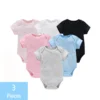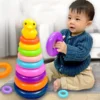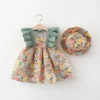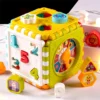Can a baby forget how to latch after bottle feeding? This is a concern for many breastfeeding parents who occasionally or regularly bottle-feed their infants. Transitioning between bottle feeding and breastfeeding can sometimes present challenges, as the techniques required for each differ. Understanding these differences and managing the transition can help ensure your baby maintains a proper latch while breastfeeding. This article explores the potential issues and provides practical tips to ease the transition between bottle feeding and breastfeeding.
Can a Baby Forget How to Latch After Bottle Feeding?
A baby can temporarily forget how to latch correctly after bottle feeding. The mechanics of bottle feeding and breastfeeding differ, and some babies may struggle to switch between the two. To manage this transition, it’s essential to use breastfeeding-friendly bottles, maintain a consistent breastfeeding routine, and seek support from a lactation consultant. These steps can help your baby adapt and maintain a proper latch during breastfeeding.
The Differences Between Bottle Feeding And Breastfeeding
- Mechanics of Bottle Feeding
Bottle feeding and breastfeeding require different techniques from the baby. When bottle feeding, the baby only needs to compress the bottle nipple to release milk. This process is often easier and requires less effort compared to breastfeeding. Additionally, milk flows more steadily from a bottle, making feeding quicker and less challenging for the baby.
- Mechanics of Breastfeeding
Breastfeeding, on the other hand, requires the baby to use a more complex sucking motion. The baby must latch onto the breast deeply, creating a seal with their mouth, and use a combination of tongue and jaw movements to express milk. This process can be more demanding and requires coordination that differs significantly from bottle feeding.
Managing The Transition Between Bottle Feeding And Breastfeeding
1. Use Breastfeeding-Friendly Bottles: To minimize the risk of nipple confusion, choose bottles designed to mimic the shape and feel of the breast. These bottles often have nipples that require a similar sucking motion to breastfeeding, making it easier for babies to switch between the two. Look for bottles with slow-flow nipples that encourage the baby to work harder for milk, similar to breastfeeding.
2. Maintain a Consistent Breastfeeding Routine: Consistency is key when transitioning between bottle feeding and breastfeeding. Try to maintain a regular breastfeeding schedule and offer the breast first before using a bottle. This helps reinforce the breastfeeding technique and encourages the baby to practice latching correctly.
3. Offer Both Breast and Bottle Offering both the breast and bottle during feeding sessions can help the baby adjust to the different techniques required. Start with breastfeeding and then offer a small amount of milk from the bottle. This approach can help the baby become more comfortable with switching between the two methods.
4. Seek Support from a Lactation Consultant: If your baby is struggling with the transition, consider seeking support from a lactation consultant. Lactation consultants are trained to help with breastfeeding issues and can provide personalized advice and techniques to improve your baby’s latch. They can also help identify any underlying problems, such as tongue-tie, that may be affecting your baby’s ability to breastfeed.
Addressing Common Challenges
Ensuring a Proper Latch
A proper latch is crucial for successful breastfeeding. Ensure your baby’s mouth covers a significant portion of the areola, not just the nipple. Their lips should be flanged outward, and their chin should be pressed against the breast. Adjusting your baby’s position and ensuring they are comfortable can help achieve a better latch.
Dealing with Frustration
It’s common for both parents and babies to feel frustrated during the transition. If your baby becomes upset, take a break and try again later. Remaining calm and patient can help your baby feel more relaxed and improve their willingness to latch correctly.
Gradual Transition
If your baby is primarily bottle-fed, transitioning back to breastfeeding should be done gradually. Start by replacing one bottle feeding with breastfeeding each day, gradually increasing the number of breastfeeding sessions. This approach helps your baby adapt to the different techniques at a comfortable pace.
Why Do Babies Struggle To Transition?
Babies may struggle to transition between bottle feeding and breastfeeding due to the differences in techniques and effort required for each method. Understanding these challenges can help parents manage the transition more effectively.
The ease of bottle feeding can make it more appealing to babies, especially if they receive milk quickly and with minimal effort. This ease can lead to a preference for bottle feeding and resistance to breastfeeding, which requires more complex sucking motions.
Additionally, the physical differences between a bottle nipple and the breast can contribute to latch issues. Babies need to open their mouths wider and use different muscle groups for breastfeeding, which can be challenging if they have become accustomed to bottle feeding.
Tips For A Smooth Transition
- Introduce Bottles Gradually: If you plan to use bottles, introduce them gradually while maintaining regular breastfeeding sessions.
- Choose the Right Bottle: Use breastfeeding-friendly bottles that mimic the breast’s shape and flow to reduce nipple confusion.
- Offer the Breast First: Always offer the breast before giving a bottle to reinforce breastfeeding techniques.
- Stay Patient and Calm: Be patient with your baby and yourself. Frustration can hinder progress, so take breaks if needed.
- Encourage Skin-to-Skin Contact: Skin-to-skin contact can help strengthen the breastfeeding bond and encourage your baby to latch.
- Seek Professional Help: Consult a lactation consultant if you encounter persistent latch issues or other challenges.
- Monitor Baby’s Cues: Pay attention to your baby’s hunger cues and feeding preferences to ensure they are comfortable and willing to feed.
Conclusion
Can a baby forget how to latch after bottle feeding? While it’s possible for babies to experience temporary latch issues when transitioning between bottle feeding and breastfeeding, these challenges can be managed with the right techniques and support. By using breastfeeding-friendly bottles, maintaining a consistent breastfeeding routine, and seeking help from a lactation consultant if needed, you can help your baby adapt and maintain a proper latch. Ensuring a successful feeding experience is crucial for your baby’s nutrition and your overall breastfeeding journey.
FAQs
Can a baby forget how to latch after bottle feeding?
Yes, a baby can temporarily forget how to latch properly due to nipple confusion and different feeding techniques.
How can I help my baby transition between bottle and breastfeeding?
Use breastfeeding-friendly bottles, maintain a consistent breastfeeding routine, and seek support from a lactation consultant if needed.
What is nipple confusion?
Nipple confusion occurs when a baby has difficulty adjusting to the different sucking techniques required for bottle feeding and breastfeeding.
Can a lactation consultant help with latch issues?
Yes, a lactation consultant can provide personalized advice and techniques to improve your baby’s latch and overall breastfeeding experience.









